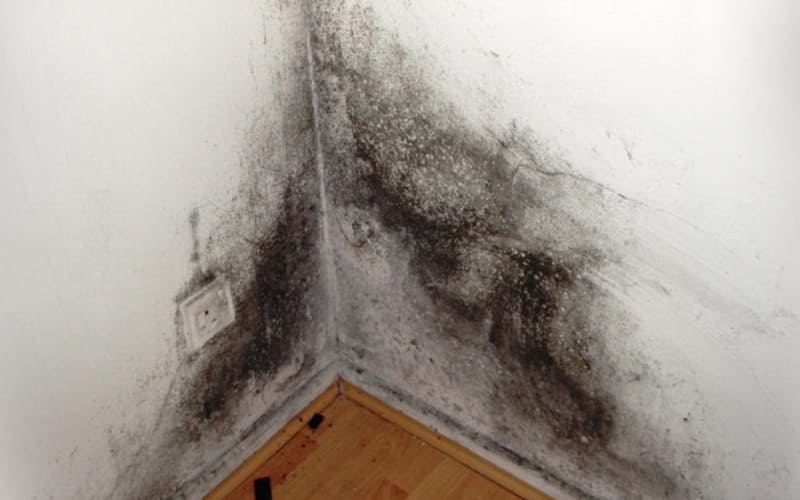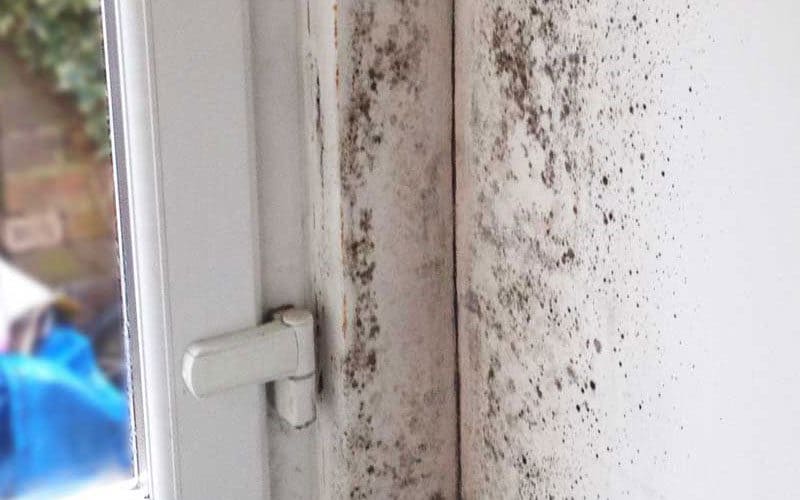Damp in the house?
Damp in the house? How to identify it? The most common types of damp in the house are: Rising Damp, Condensation and Penetrating damp, other damp sources may be due to leaking internal water pipes, roof faults and Chimney Issues
SmartDry has been the specialist
in damp solutions since 2013
100% damp-free warranty.
We can solve your problem!
Sustainable solution: better
for your health and home
Recognising a damp problem in your home.
This may be first noticed visually or a musty damp smell in the house, especially prominent when entering the house when returning from a day out. The Musty smell is caused by mould growth. Does your home take a long time to heat when the boiler is turned on, are your energy bills much higher than you were expecting or well above the average consumption for the type of property – your energy company can tell you if your energy usage is on par with the majority. Do you have wooden doors that don’t close or open properly and sticking drawers that don’t slide out easily? Do you have a tide mark on the walls – wallpaper peeling off or plaster crumbling, Is paint peeling or appears to be reacting creating a bubbled uneven surface.


Rising Damp
This is most prominent in pre 1970s properties due to the types of damp proofing courses that were available at the time – Post 1970s properties have a membrane fitted as the DPC, prior to the 1970s it was Blue Brick / engineering brick/ bitumen or a slate bed – many properties circa the turn of the 20th century were built directly onto the ground and no substantive DPC was fitted. Rising damp often provides a strong visual appearance – a wavy damp tide mark running parallel to the skirting board – this can be as high as 1 metre, If the wall is papered this will be peeling and the paper will feel wet, If painted then paint will be peeling, cracking – the closer the tide mark is to the skirting board the earlier you have discovered the issue.
With Rising Damp there usually is no mould – this is because the moisture being forced up from the ground water table contains minerals and nitrates – common salts – these salts kill the spores that form mould. If an anti-damp or damp proof paint has been applied these are high polymer paints (Polymer is plastic) and the plastic prevents the salts getting to the mould spores to kill them – so in this situation you can have rising damp and mould. Rising damp only affects the ground floor level.
Penetrating Damp
Penetrating Damp could be a leaking pipe within the wall, damaged mortar or render on the outside of the property allowing water to penetrate the walls, an overflowing gutter constantly wetting the outer brickwork – and over time this will be absorbed deep into the wall.Blocked external drains or water puddling against the wall in rainfall due to incorrectly laid patios/slabs etc – or the ground level being too high up the wall. Silicon window frame seals do shrink as they age – so check your seals if they have not been tended to for the last 6 years as driving rain will penetrate between the frame and the wall if the silicon has shrunk – leaving a gap.
Check any external cables or TV/satellite cables do not traverse directly vertical and then enter the property via a drilled hole – rainwater feeds the wall with water if they are fitted this way – cables should travel below the point of entry then loop back up before entering the hole drilled into the house – water then drips off the end of the loop and keeps the wall dry.
A roof fault, underneath your roof tiles there is a waterproof membrane – usually felt, this ages and becomes brittle and can crack – also small birds tend to nest just under the first tile – as they peck to form their nests they sometimes peck and damage the felt – which allows some water to enter the roof space and can create dap spots or mould on ceilings – very close to the outer walls.
Chimneys
Chimneys were designed to have a real fire which was the only heat source and source to heat water for the house – so most days a fire was lit irrespective of the time of year. The flue for the chimney is a single brick outer construction which was lined with a cement screed as the chimney was built – the screed was designed to absorb the toxins generated by the combustion process when coal or Coke was burned. Daily use of the fire always meant the chimney was dry internally. However, we have moved away from real fires – or real fires are lit on special occasions only – they have become decorative rather than functional, or a gas fire /log burner fitted – and in some cased boarded up.
Chimneys never create a draft – they are designed to suck air from the room and vent the fumes from the combustion. Damp issues on Chimney breasts are usually created because a cap hasn’t been fitted to the chimney stack, no cap means rainwater gets into the chimney flue and wets the walls, the screed on the walls becomes wet and the old toxins become activated which usually manifests in damp blotches mid-way up the wall, paint peeling with soft crumbling plaster. Boarded up fireplaces should always have a vent installed which will allow a flow of air up the chimney – This flow of air will dry any condensation forming within the flue before the brickwork becomes saturated and activates the toxins within the screed which in turn will prevent the damp blotches and peeling paint on the inner chimney walls.
Condensation
Damp in the Kitchen and bathroom is usually the effects of condensation- cooking food produces lots of steam (Humidity) – as does bathing or showering, Ventilation is the key in these areas, both areas need to have efficient air extraction systems – a cooker hood for example in the kitchen – externally vented (Recirculating types just have a grease filter – the humid air is simply returned to the room – so does nothing to address condensation). Saucepans should have lids on them – this reduces the generation of humidity and also saves energy. Bathrooms should have air extraction systems too and humidity regulated extractor fans are particularly efficient – these require no user input as they activate and shut down according to humidity levels.
Solutions to reduce damp in the home
In principle, each damp problem requires a different method as a solution. Condensation can best be prevented by creating effective ventilation, reducing humidity and keeping a comfortable temperature within the house, please bear in mind that other damp issues (Rising or penetrating damp) can exacerbate or promote condensation – so you should have an expert survey the property to identify the issues and provide a strategy to remedy.
At SmartDry, we are damp specialists, that’s why it’s wise to contact us for a free no obligation survey We will then provide you with advice and offer an environmental solution at a very competitive price with a lifetime guarantee against damp returning.
Plan a free damp assessment
Feel free to contact us for a free damp assessment or advice from our moisture expert.


